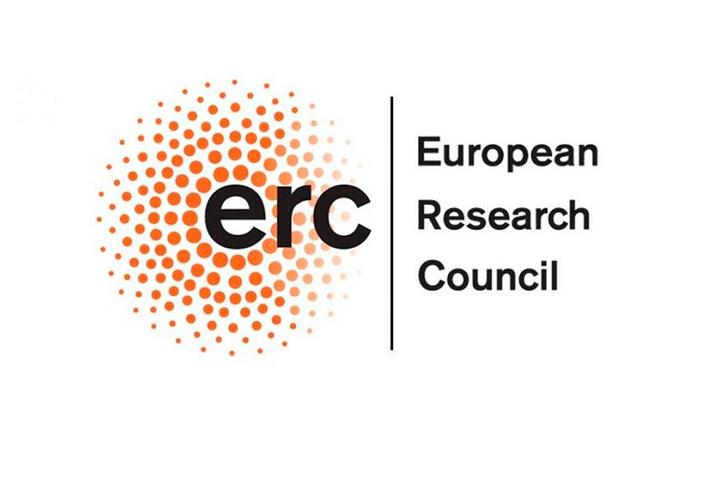Unlocking Research Study Opportunities: A Deep Study the ERC Grant
Wiki Article
Opening the Possible of the Employee Retention Debt (ERC): What You Need to Know
Are you conscious of the possible benefits of the Employee Retention Debt (ERC)? If not, it's time to dive in and find what you require to recognize. This article will offer a review of the ERC, outline the eligibility demands, and also educate you just how to calculate the credit history. And also, we'll share approaches for optimizing the ERC as well as highlight usual errors to stay clear of. Prepare yourself to unlock the full capacity of the ERC as well as improve your organization's lower line.Overview of the Staff Member Retention Credit Score (ERC.
Right here's what you need to know if you're asking yourself regarding the fundamentals of the Employee Retention Credit (ERC). The Staff Member Retention Credit is a tax obligation credit created to help services maintain their workers on payroll during difficult times, such as the COVID-19 pandemic. It was presented as part of the CARES Act in 2020 as well as has actually been prolonged and also broadened under succeeding legislation - erc grant. The credit score is readily available to eligible companies who either experienced a substantial decline in gross invoices or went through a complete or partial suspension of procedures because of federal government orders.The ERC is an useful device for companies as it supplies a refundable tax obligation credit history of approximately $7,000 per employee per quarter. This credit report can be made use of to offset certain employment tax obligations, consisting of government income tax withholding, the employer part of Social Protection and also Medicare taxes, and the Railroad Retirement Tax obligation Act taxes. The debt is calculated based on the qualified wages paid to workers during the eligible period.
To be qualified for the ERC, organizations must meet certain criteria, such as having less than 500 full-time employees and experiencing a decrease in gross invoices. The credit rating is also available to tax-exempt organizations. It is necessary to note that businesses who obtained a Paycheck Security Program funding can still qualify for the ERC, yet they can not assert the credit scores for salaries paid with forgiven PPP funds.
Eligibility and Credentials for the ERC.
To be qualified for the Employee Retention Debt, you need to have experienced a significant decline in gross invoices due to the COVID-19 pandemic. Additionally, if your service was fully or partly suspended by a government order, you might also be eligible for the credit rating.You can assert the credit rating for salaries paid to employees that are not functioning due to either a partial or complete suspension of procedures, or a considerable decrease in gross receipts (erc grant). It's essential to note that the credit is just available for wages paid in between March 13, 2020, and December 31, 2021.

Computing the Employee Retention Debt.
To calculate the Worker Retention Credit, you'll first need to figure out the certified incomes paid to employees during the eligible period. This credit score gives a valuable opportunity for companies to get monetary help for maintaining their staff members on pay-roll throughout the COVID-19 pandemic. The certified earnings consist of the expense of employer-provided wellness treatment, however not earnings that were currently covered by the Paycheck Security Program (PPP) funding mercy. You can then calculate the credit rating by multiplying the qualified earnings by the appropriate credit history rate as soon as you have actually figured out the qualified incomes. For organizations with approximately 100 full time employees, the credit history price is 70% of certified earnings, as much as $10,000 per staff member per quarter. For businesses with greater than 100 full time workers, the credit score rate is 50% of certified salaries, as much as $10,000 per staff member per quarter. It is necessary to keep in mind that the credit rating can not surpass the employer's share of social safety taxes for the same period. To claim the credit report, you will certainly require to report it on your quarterly work income tax return, Type 941. The Employee Retention Credit history can supply substantial economic relief for services having a hard time to keep their staff members during these challenging times.Methods for Maximizing the Employee Retention Credit History.
When making best use of the Employee Retention Credit History, it's essential for businesses to carefully track and document the certified incomes paid to qualified staff members. By doing so, you make certain that you are asserting the credit accurately and also in conformity with the internal revenue service standards. Get the facts Begin by determining which workers are eligible for the credit scores. This includes those who were preserved throughout a qualifying period and were paid certified earnings. Keep comprehensive documents of the incomes paid to every eligible employee, consisting of the quantities as well as dates. It's additionally vital to document any changes in work standing, such as furloughs or decreased hours, as these may influence the credit rating amount. In addition, make certain you have supporting documents for any type of other competent expenses, such as health insurance expenses. By maintaining exact documents, you can with confidence declare the optimum credit history you are qualified to. Keep in mind, the Staff member Retention Credit rating can provide substantial monetary relief click reference for your business, so it's worth investing the time and also effort to track and also document the qualified incomes properly.Common Mistakes to Avoid When Declaring the Worker Retention Credit.When Claiming the Employee Retention Credit Report
One usual blunder to prevent is stopping working to keep accurate records of the certified earnings paid to qualified workers, as this can result in inaccuracies in asserting the credit rating. Maintaining comprehensive and organized records is crucial when it comes to claiming the Employee Retention Credit Rating (ERC). It is necessary to keep paperwork that clearly shows the incomes paid to eligible staff members as well as the duration in which those earnings were paid. This consists of pay-roll records, timesheets, and any type of other appropriate documents. By falling short to keep precise documents, you run the danger of not having the ability to give the needed evidence to claim the credit rating. In addition, errors in your record-keeping can result in asserting a wrong quantity of credit history, which could bring about charges or also an audit. To stay clear of these pitfalls, see to it to execute a system for accurately tracking as well as recording the qualified incomes paid to eligible staff members. This will certainly not only make certain that you can claim the credit rating properly yet also offer assurance understanding that you have the essential evidence to support your insurance claim.

Verdict.
In conclusion, now that you understand the ins as well as outs of the Staff Member Retention Credit Rating (ERC), you can unlock its complete possibility for your organization. By recognizing the eligibility and qualifications, computing the credit rating properly, and executing strategies to optimize it, you can enjoy the benefits.The Employee Retention Credit is a tax obligation credit score designed to help services keep their employees on pay-roll during tough times, such as the COVID-19 pandemic. To determine the Worker More about the author Retention Credit report, you'll first require to figure out the certified salaries paid to staff members during the eligible time period. When you have figured out the qualified earnings, you can then determine the credit scores by multiplying the qualified earnings by the applicable debt rate. For organizations with more than 100 permanent employees, the credit report rate is 50% of certified wages, up to $10,000 per worker per quarter. When maximizing the Worker Retention Credit, it's crucial for organizations to thoroughly track and also document the qualified earnings paid to qualified employees.
Report this wiki page